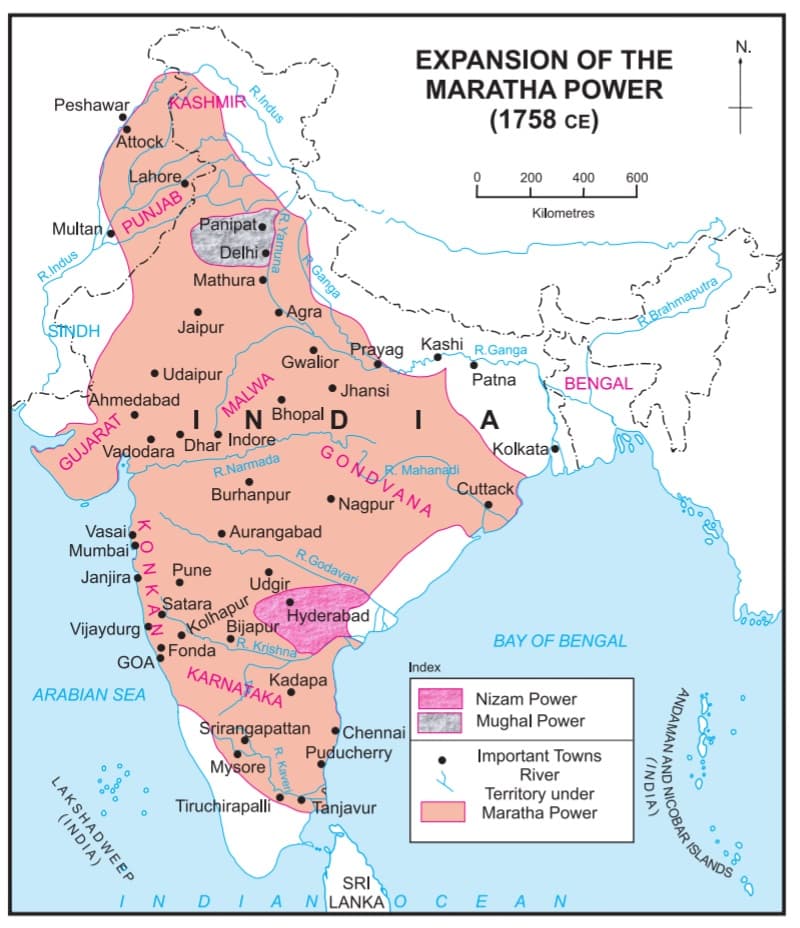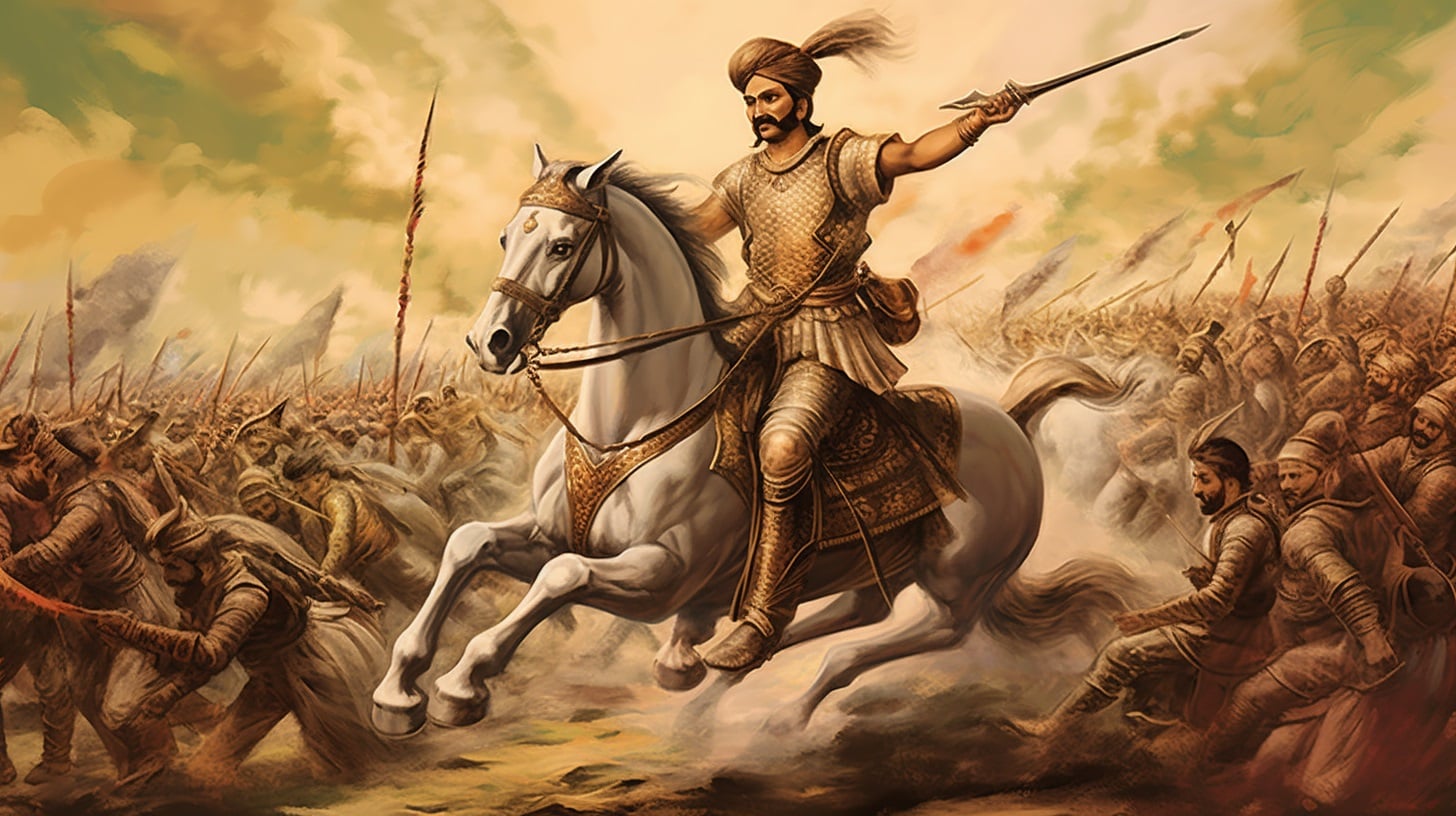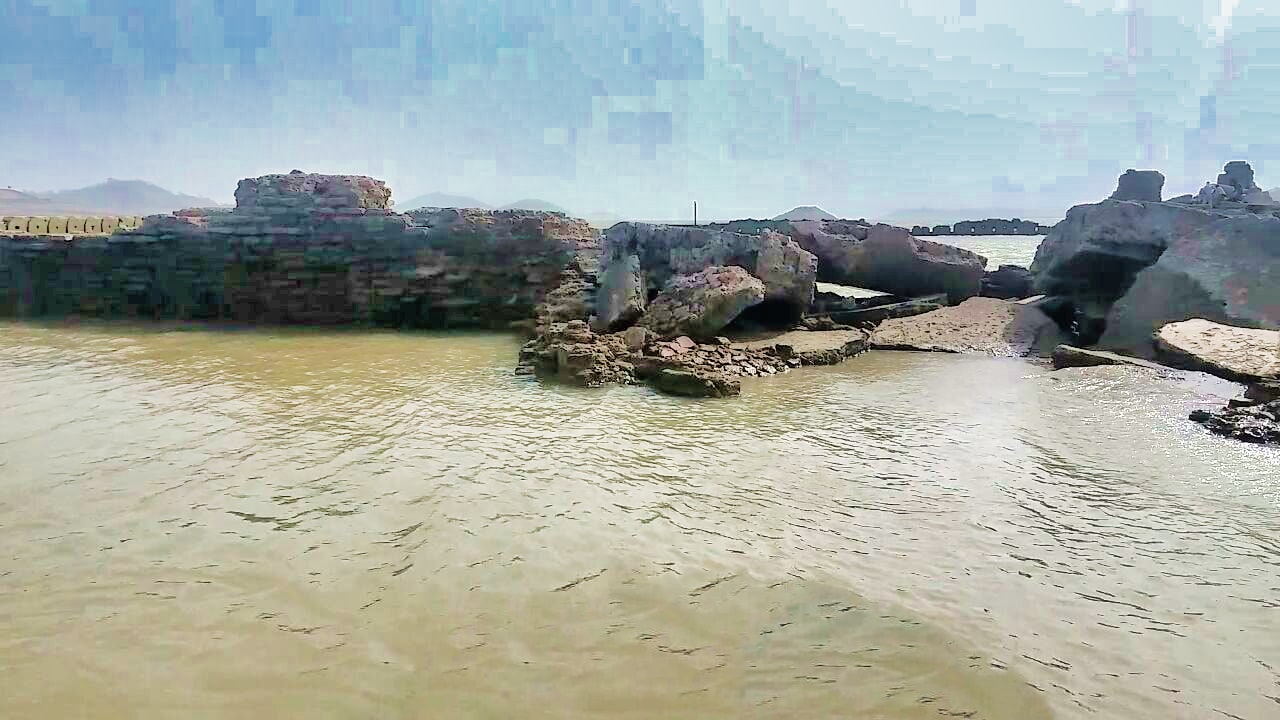Preamble
When Peshwa Balaji Vishwanath started the Gujarat campaign, the Maratha Empire in Gujarat began taking its shape. This prosperous state in India is renowned for its industrial and tourism sectors.
Whether it is the textile industry or the diamond business. No matter which industry it is, Gujarat has excelled in each field. It ultimately made it an important state. Located on the western coast of India, it has always been a center of attraction for traders.
Due to its prosperity, Gujarat was a significant trading center for the Dutch, French, Portuguese, Mughal, and the British. From around 1290 to 1705, it was under the rule of various Muslim dynasties.
On orders from Queen Tarabai in 1705 CE, Khanderao Dabhade led the Maratha campaign of Gujarat.
Khanderao established the Maratha rule in Gujarat, reducing Mughal influence with the help of Gaekwad and Kadam Bande. According to Wikipedia, this campaign continued until 1716.

During the reign of Shivraya, the Marathas started raiding Gujarat and claimed to levy Chauth. However, it appears not to have been officially entered into in practical negotiations until 1717 CE.
In the negotiations with Husain Ali in 1717 CE, Shahu Maharaj also requested him to recognize the claims of Gujarat along with some other provinces. After that, when Balaji Vishwanath went to Delhi in 1719 CE, he once again negotiated for the Chauth of the two provinces.
However, these claims were rejected, resulting in a rise in Maratha raids on Gujarat. Then in the rebellion of Nizam-ul-Mulk in 1724 CE, both the emperor and him sought the support of the Marathas.
At that time, the Marathas demanded that the claims of Chauth levy on Gujarat and some other provinces be accepted. Neither the Nizam nor the Emperor made a direct promise, as they understood the strategic importance and economic prosperity of the provinces.
Then, Bajirao Peshwa defeated Nizam-ul-Mulk in 1728 CE. He was then forced to turn a blind eye to Maratha movements in Gujarat. Then he used to ignore the troops passing through their territory. Thus, the Mughal did not realize the full power of the Marathas in Gujarat until 1728 CE.
The Maratha Empire of Gujarat and Malwa was conquered in three stages. In the first phase, the Marathas established the right of Chauth and Sardeshmukhi, which was the right to levy revenue and troops in the provinces. With the help of this right, the Marathas extended their influence in Gujarat and Malwa.
In the second phase, the Marathas divided the provinces into the spheres of influence of the Maratha chieftains. This strengthened the Maratha dominance in the provinces.
In the third phase, the Marathas gained complete control over Gujarat and Malwa. They declared these provinces as their provinces.
In May 1726, the imperial governor of Gujarat, Sarbuland Khan, recognized the Maratha claim to Chauth and Sardeshmukhi over Subha. Once the principles of Chauth and Sardeshmukhi were embraced in the Deccan, it would be difficult to argue against implementing a similar system in Gujarat, especially if it can be proven that the Marathas cannot be overcome by military means.
Despite giving Chauth and Sardeshmukhi, marauding activities of Maratha chieftains did not end. There was a dispute between chief lieutenant Pilaji Gaikwad of Dabhade and Kantha Kadam over the division of Chauth. Due to this, there was constant conflict between them.
Bajirao strongly rejected the claim made by the representative of Chauth of Gujarat, who was appointed by Shahu. On the other hand, Bajirao was busy in Deccan and later in Malwa. Meanwhile, the Maratha chieftains gradually took over 28 districts of southern Gujarat. In 1730 CE, Bajirao returned to Gujarat politics.
Bajirao entered into an agreement with Abhay Singh to acquire Chauth and Sardeshmukhi rights over Gujarat. According to this agreement, Abhay Singh paid Bajirao Rs 13 lakh on the condition that Bajirao expel Gaikwad and Kantha Kadam from Gujarat.
By 1732 CE, Marathas not only had the Chauth and Sardeshmukhi powers been recognized by the governors, but they had gained control over several districts so that they could enforce their claims more effectively.
Bajirao defeated Trimbakrao Dabhade in the battle of Dabhoi in 1731 CE. The Dabhades received most of Gujarat in a subsequent decision made by Shahu Maharaj. When Gujarat eventually came under the Gaikwad dynasty, they expelled Dabhade from Gujarat.
Abhai Singh also risked his life to forcibly remove the Marathas from Gujarat. As in 1733 CE, he invited Pilajirao Gaikwad to a conference and killed him. But, Abhai Singh did not benefit much from this murder.
Because, under the leadership of Umabai, the Marathas united and Damajirao as deputy increased the dominance of the Marathas in Gujarat.
Abhay Singh now realizes that the situation is out of hand, so he flees to Marwar. By this time, the foundation for the third phase i.e. regional annexation was laid. Now only, a proper grant from the Emperor was necessary to authorize the post.
Dabhade Dynasty – Establishing Maratha Rule in Gujarat

In 1729, after the death of Khanderao, Trimbakrao Dabhade took charge of Gujarat. He was a valiant and adventurous leader, so in a brief period, he completely took control of the state.
He was a Maratha chief general and ruler of Gujarat, belonging to the Maratha Empire. So, he was bound to take orders from Chhatrapati Shahu Maharaj of Satara. As an emperor, he made Satara his capital and ruled the Maratha Empire from there.
During the time of Trimbakrao, Bajirao Ballal was the Peshwa. As Gujarat was one of the rich provinces, Bajirao forced Trimbakrao to give tax collection rights.
But Trimbakrao refused and started a campaign against Peshwa.
Trimbakrao along with Nizam, Gaekwad, Kadam Bande revolted against this decision of Peshwa. Which leads to the Battle of Dabhoi fought on April 1, 1731 CE, Peshwa Bajirao I crushed this rebellion.
But, unfortunately, Trimbakrao was killed in this battle by a gunshot fired by the maternal uncle of Trimbakrao, Bhanusingh Thoke.
Shahu Maharaj was sometimes kept in the dark by the Peshwa about several campaigns. Just as Shahu Maharaj had no idea about the help given to king Chhatrasal, Shahu Maharaj also did not know about the battle of Dabhoi before it happened.
Shahu Maharaj was obviously upset with Bajirao as one of his great general was killed in the battle.
So, Chhatrapati Shahu Maharaj called the mother of Trimbakrao, Umabai and Peshwa Bajirao, to Satara to judge.
Although not killed himself, a mother had lost her son. So Bajirao himself touched the feet of Umabai Dabhade and begged for forgiveness.
In this judgment held in Satara, Chhatrapati Shahu appointed Umabai as the commander of Gujarat after Trimbakrao.
After Umabai, however, the dominance of the Dabhade family in Gujarat declined and the dominance of the Gaekwad family increased.
Gaikwad Dynasty – Strengthening Maratha Rule in Gujarat
After that, Pilajirao Gaikwad was an important military officer in the army of Khanderao, took charge of Gujarat.
Pilajirao Gaikwad made this campaign started by Dabhade by starting the Gaikwad dynasty in Gujarat.
Beginning of Gaikwad Dynasty and Maratha Rule in Gujarat
Pilajirao, like the Khanderaos, possessed great skills as a strategist, adventurous by nature and mighty. At the beginning of 1720, he built Sonagarh and started the administration from this fort.
He captured Baroda in 1721 and later Surat, as well as other parts. So he became the first truly Maratha ruler of Gujarat.
The Gaikwad family started all the administration from the city of Baroda. In this dynasty, Khanderao Gaekwad II, who ascended the throne on December 12, 1856 CE, died prematurely on November 20, 1870 CE. As they had no children, the wife of Khanderava adopted a son. He named this boy as Sayajirao.
Then, brother of Khanderao II, Malharrao Gaikwad was installed on the throne of Baroda. The British removed them in 1875 due to their cruel and tyrannic administration.

Reign of Sayajirao
However, the adopted son of Jamnabai Sayajirao became the ruler of Baroda. He ruled for 63 years and transformed Baroda during his reign. Sayajirao was one of the richest rulers of India during his reign. He is considered to be the greatest and most popular ruler in the history of Baroda in Gujarat.
Conclusion
The Maratha Empire in Gujarat is a historically significant era. The Dabhade and Gayakwad dynasties made significant contributions to the development and history of Gujarat.
In this article, we have learned about rule in Baroda, now known as Vadodara, Gujarat. Two important houses ruled there were the Dabhade and Gayakwad families. If you want to read more about the topic, then feel free to go through Maratha Rule in Gujarat.
We hope you liked this article. Feel free to share it with your friends and family, so they can also learn about these royal Maratha dynasties.
Citations
Images Credits:
Maratha Empire in 1758, Credit: Fidolex
